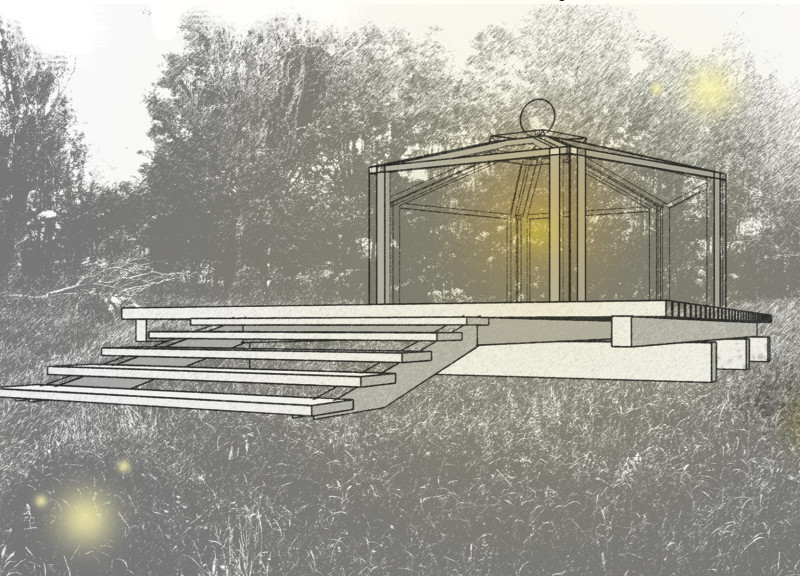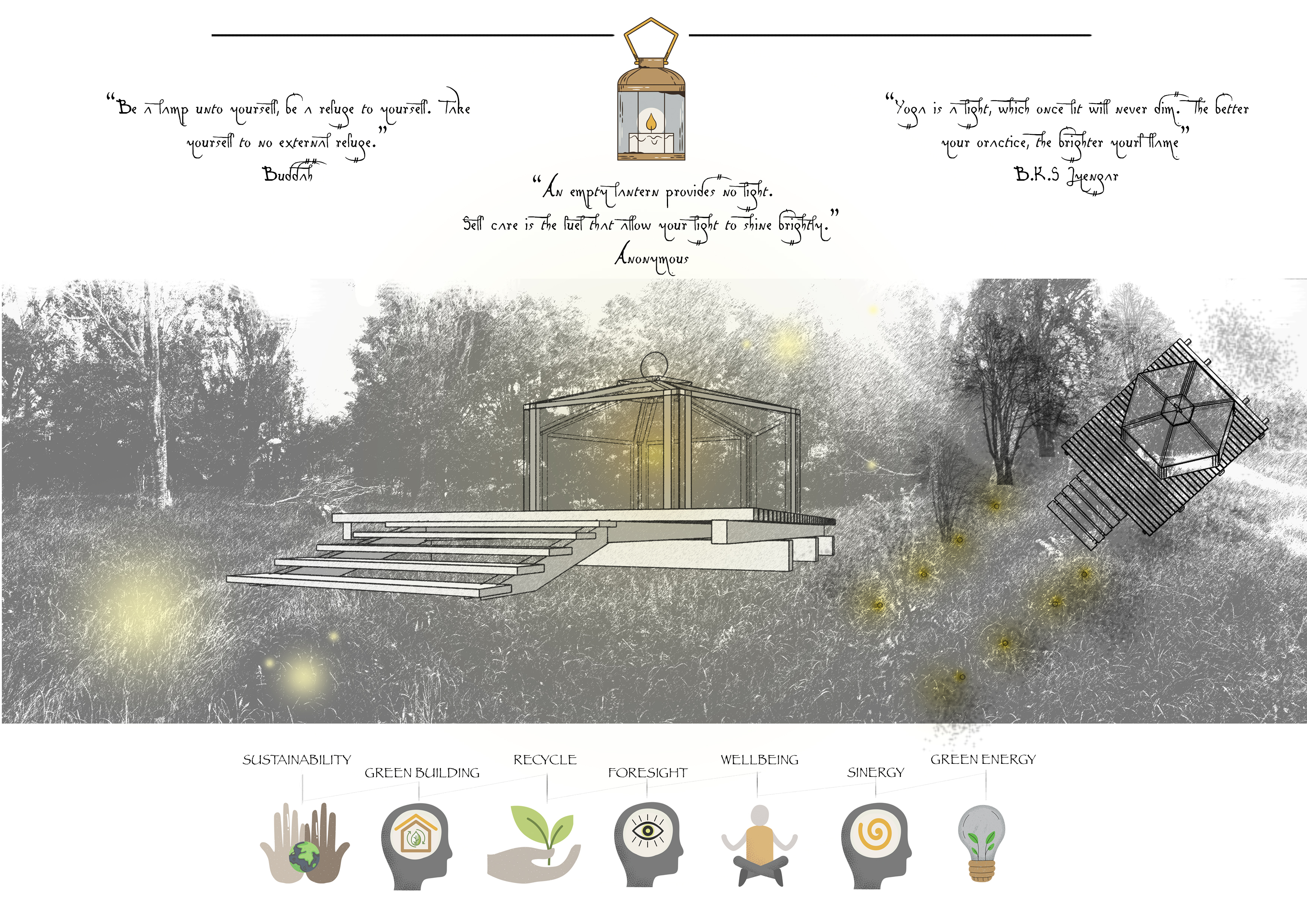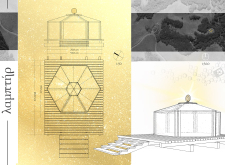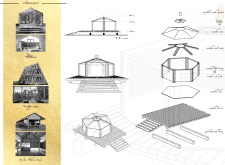5 key facts about this project
The pavilion complements its surroundings with sustainable design features that enhance its function. The use of natural materials, including wood for the structural framework and decking, invites tactile connection and warmth. Glass panels are strategically placed to maximize natural light, creating an inviting atmosphere. The integration of metal components, such as aluminum or steel, adds structural integrity to the design while offering aesthetic appeal. These design choices reflect a commitment to environmentally conscious building practices.
Unique Architectural Elements
The Lantern Pavilion distinguishes itself through thoughtful spatial organization and a clear focus on user experience. Its octagonal configuration not only provides visual interest but also allows for flexible interior spaces adaptable to various activities, including group gatherings or individual meditation. The peaked roof, crowned with a lantern feature, serves dual purposes: it acts as a design focal point and facilitates natural ventilation, enhancing indoor air quality.
The incorporation of a wooden deck ensures minimal disturbance to the existing landscape, fostering a seamless transition between built and natural environments. This design embraces the ethos of biophilic architecture by encouraging occupants to connect with nature while engaging in wellness practices.
Environmental Considerations
The project emphasizes sustainability as a core aspect of its design philosophy. By utilizing renewable materials and energy-efficient elements, the pavilion reduces its ecological footprint. The extensive use of glass not only allows for passive heating through sunlight but also supports visual continuity with the surrounding landscape, reinforcing the connection between the interior space and nature.
Additionally, the pavilion’s features assist in rainwater collection, supporting an integrated approach to water management that minimizes runoff and maximizes resource efficiency. This thoughtful design promotes an ongoing dialogue about environmental stewardship in architectural practice.
For a comprehensive understanding of the Lantern Pavilion’s design and architectural ideas, readers are encouraged to explore the project's presentation further. Detailed architectural plans, sections, and visualizations provide deeper insights into how the project harmonizes aesthetics, functionality, and sustainability. This exploration may reveal the nuances of architectural designs that contribute to a platform for personal and communal well-being.


























